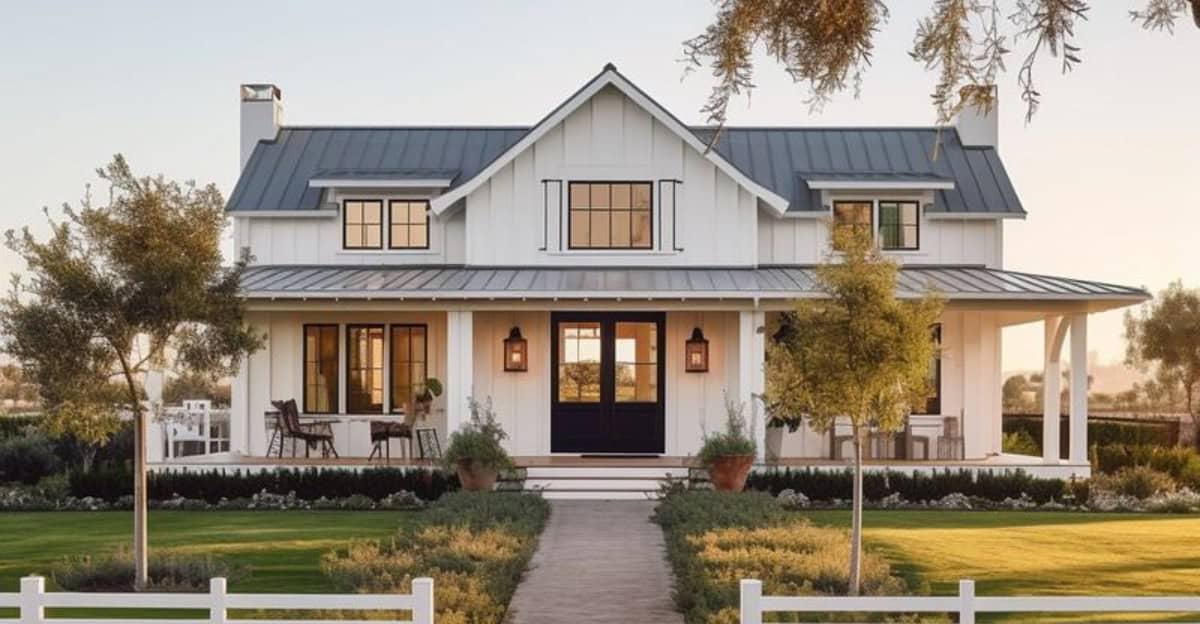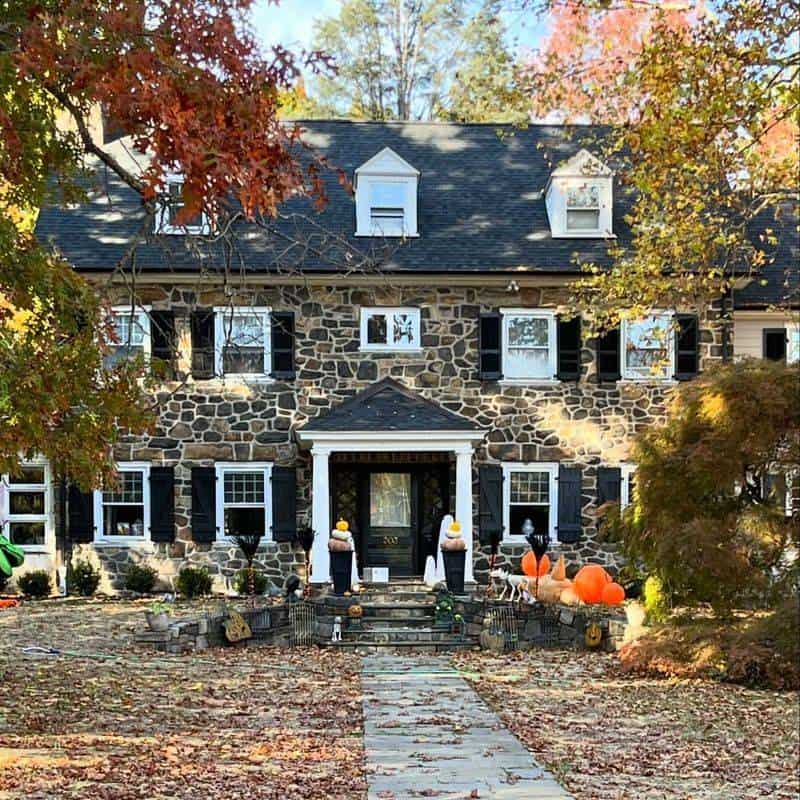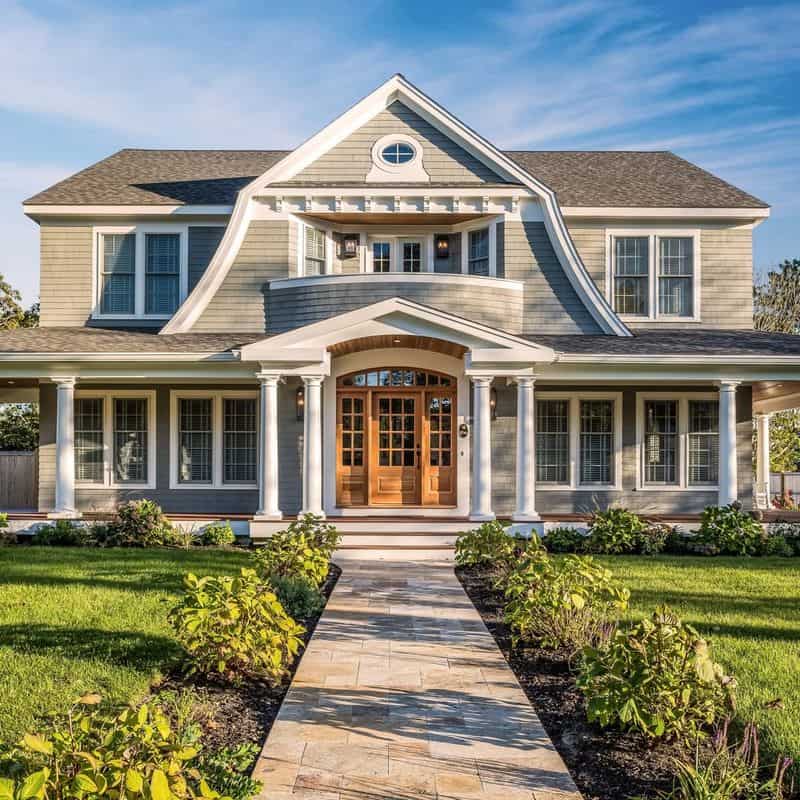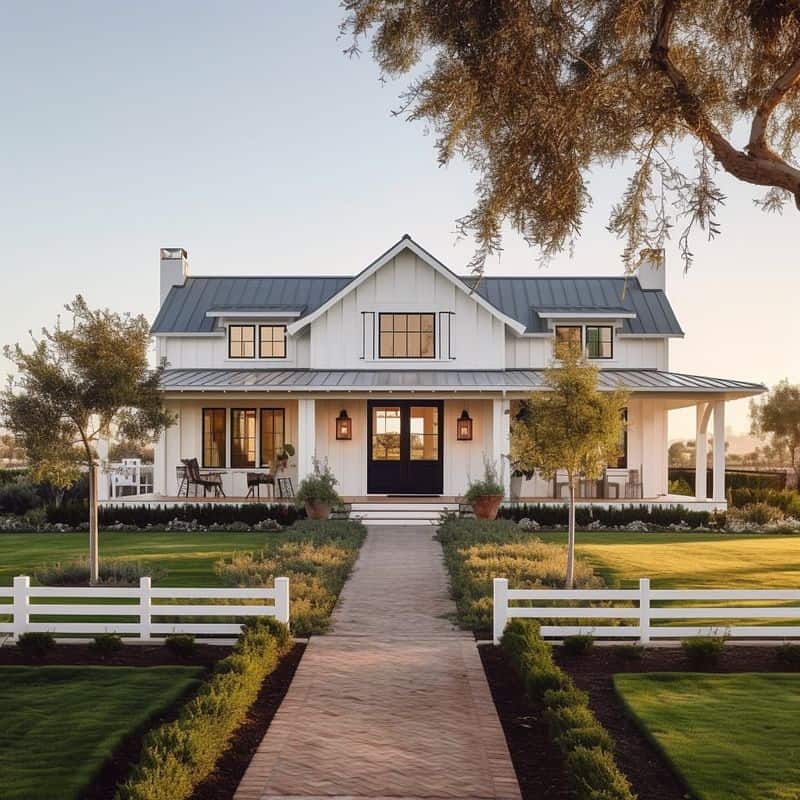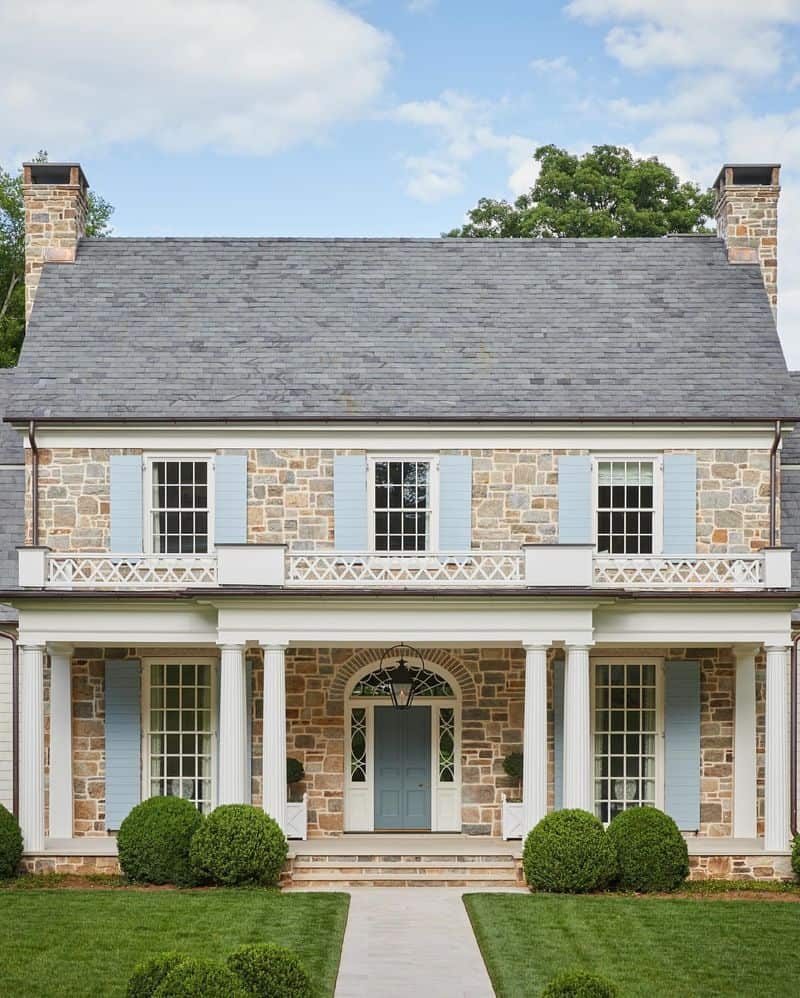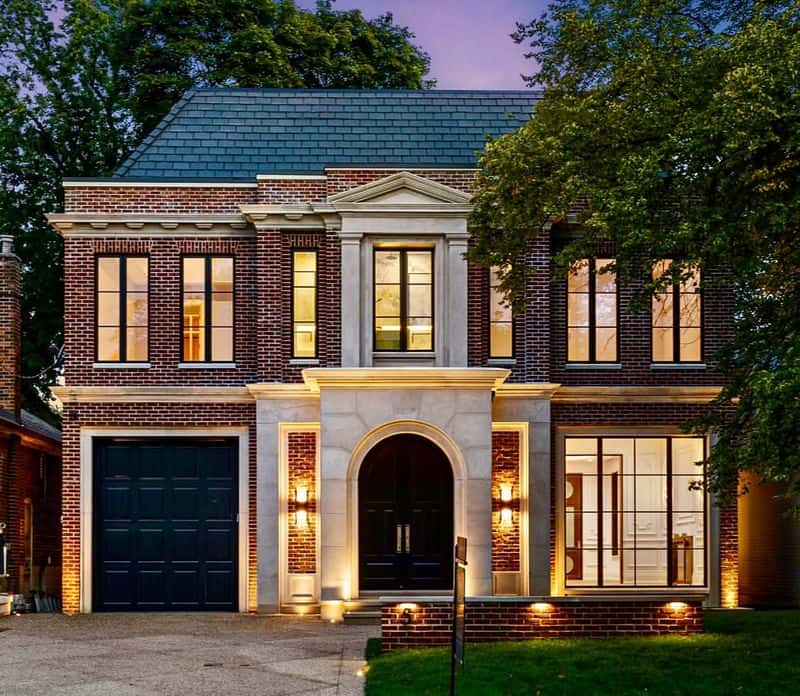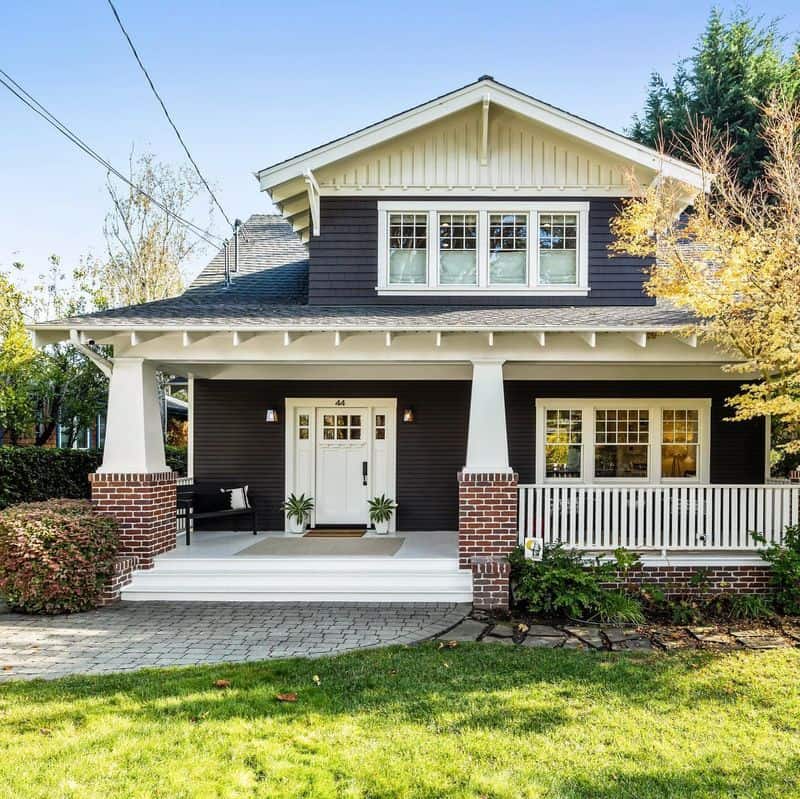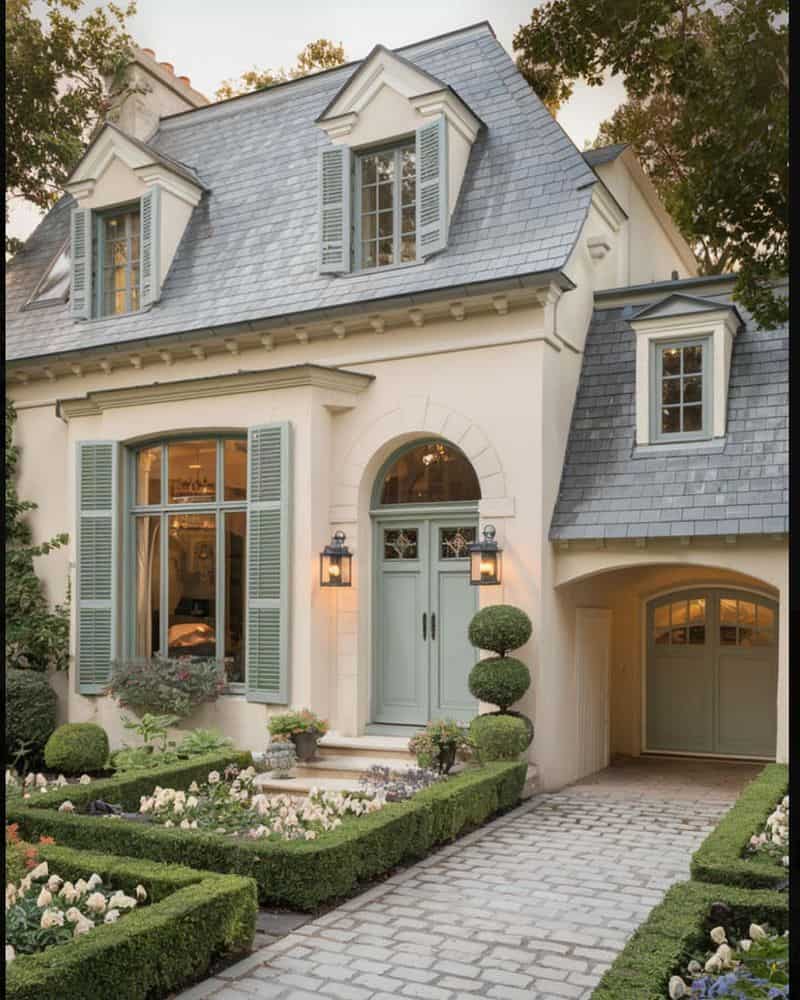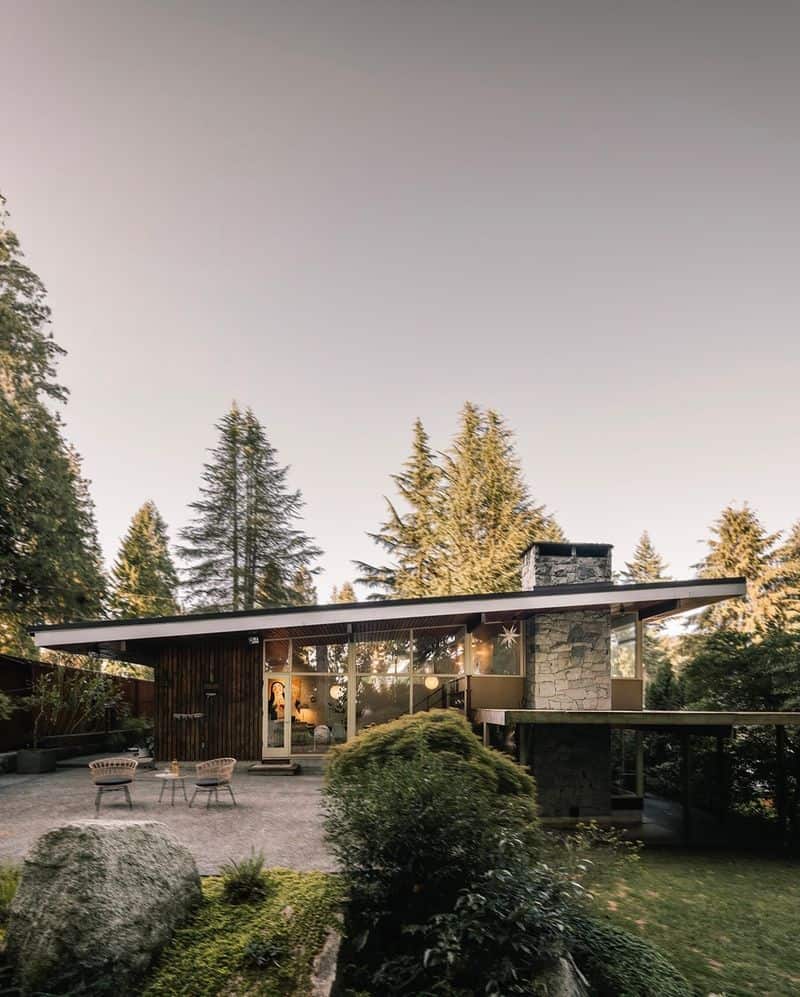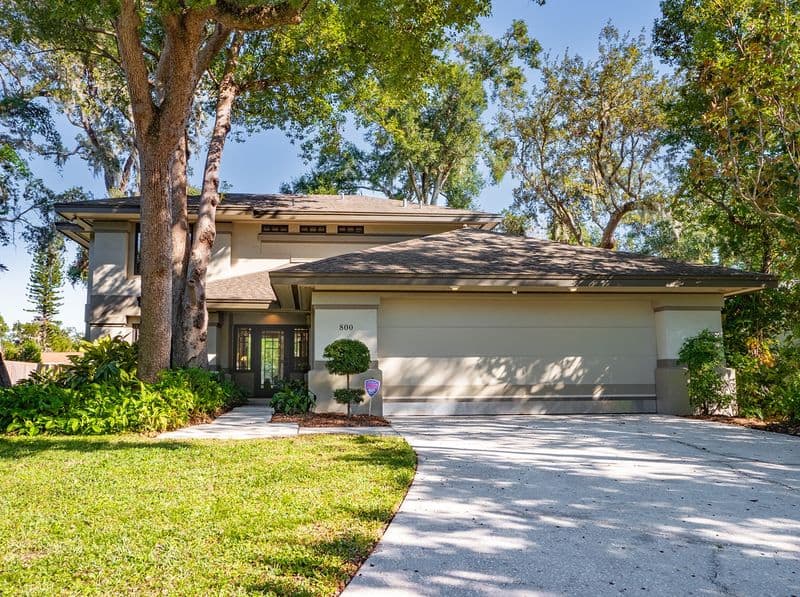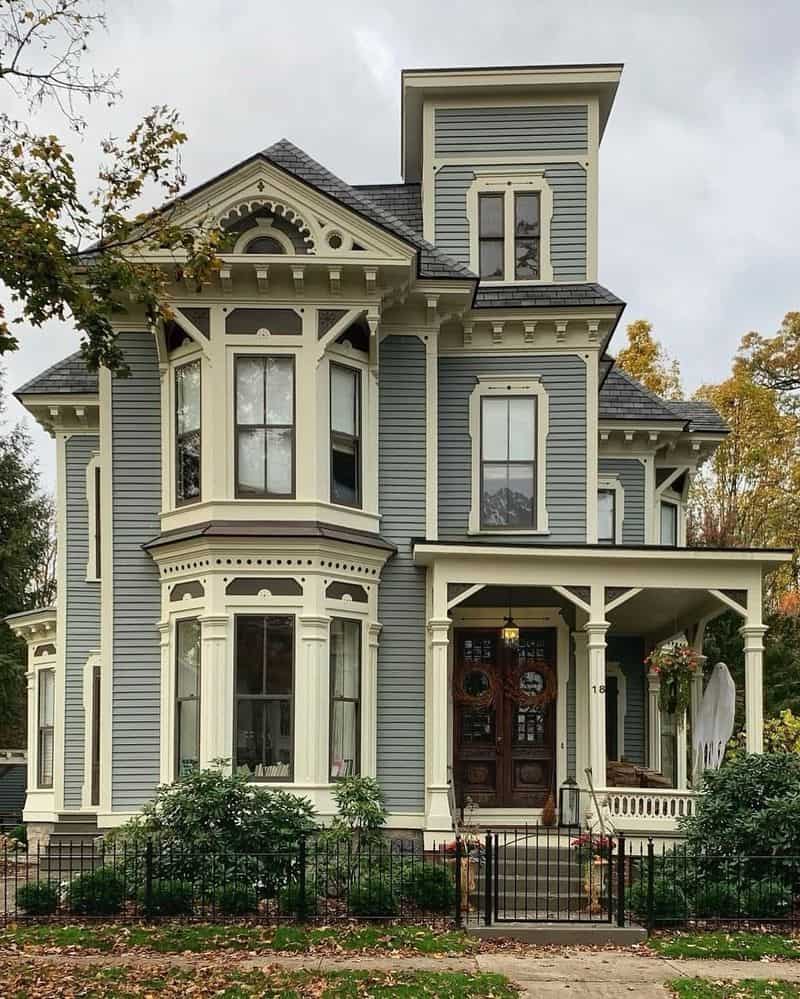Exploring the architectural tapestry of America, one discovers a rich variety of house styles that have defined the nation’s residential landscape.
From the stately Colonial homes to the innovative Prairie houses, each style tells a story of its own. These styles not only reflect the historical and cultural context of their times but also continue to inspire modern architecture.
Let’s embark on a journey through the evolution of American house styles, celebrating the enduring charm and diversity that these homes bring to the nation’s identity.
1. Colonial Houses
Colonial houses are a testament to America’s early architectural foundations. Rooted in European influences, they feature a symmetrical facade with a central doorway.
Often constructed with brick or wood, these homes are characterized by evenly spaced windows and classic, understated elegance.
The interiors typically include spacious rooms, central chimneys, and a practical layout. These houses served as the backdrop to many significant historical events.
Today, Colonial homes continue to symbolize a connection to America’s past, offering both charm and functionality. Their timeless appeal makes them a popular choice among homeowners seeking tradition.
2. Cape Cod Houses
Cape Cod houses offer a cozy, coastal charm reminiscent of New England landscapes. Featuring a steep pitched roof and central chimney, these homes are designed to withstand harsh weather conditions.
The simple, rectangular shape is often adorned with dormer windows, adding space and light.
Originally built by early settlers, Cape Cod houses were practical and efficient, offering a snug haven against the elements.
The shingled exterior and minimalistic design exude a rustic yet inviting atmosphere. Modern adaptations continue to honor their heritage while incorporating contemporary comforts. Perfect for those seeking warmth and simplicity in design.
3. Farmhouses
Farmhouses evoke a sense of rural nostalgia with their functional design and expansive porches. Built to accommodate agricultural lifestyles, these homes offer spacious, open interiors and sturdy wooden exteriors.
The gabled roof and practical layout emphasize functionality and simplicity. Originally serving as the heart of farm life, these houses were central to family gatherings and daily routines.
Farmhouses continue to embody a rustic charm, often featuring adjacent barns or outbuildings.
Their enduring appeal lies in their blend of practicality and comfort, making them a beloved choice for those seeking a connection to the countryside.
4. French Colonial Houses
French Colonial houses bring a touch of European elegance to America’s architectural landscape. Characterized by high ceilings and large windows, they offer a bright and airy atmosphere.
The hallmark of these homes is the wraparound porch, providing shade and outdoor living space in warm climates.
Influenced by French architectural styles, these homes often feature intricate woodwork and ornamental details. Originally built in Southern regions, they are designed to enhance airflow and comfort.
French Colonial houses are celebrated for their stately presence and timeless appeal, offering a unique blend of history and style for modern homeowners.
5. Georgian Houses
Georgian houses stand as a symbol of formality and grandeur in American architecture. Known for their symmetrical design and red brick exteriors, these homes often feature white columns and classical details.
The elegance of Georgian architecture is reflected in its balanced proportions and meticulous landscaping.
Originating from the 18th century, these houses were built to convey wealth and stature. Interiors typically boast high ceilings, grand staircases, and elaborate moldings.
Today, Georgian homes remain desirable for their stately elegance and timeless sophistication, appealing to those who appreciate classical architectural beauty and historical significance.
6. Craftsman Houses
Craftsman houses emerged in the early 20th century, emphasizing handcrafted details and quality materials.
Featuring a low-pitched roof and overhanging eaves, these homes offer an inviting, grounded presence. Built-in furniture and intricate woodwork are hallmarks of the Craftsman style.
Inspired by the Arts and Crafts movement, these houses prioritize functionality and simplicity, blending seamlessly with their surroundings.
The cozy porch serves as a welcoming focal point, perfect for relaxation. Craftsman homes continue to charm homeowners with their warmth and artisanal touches, reflecting a harmonious balance between design and craftsmanship.
7. French Country Style Homes
French Country style homes exude rustic elegance, combining comfort with European flair.
Featuring stone or stucco exteriors, these homes often include arched doorways and charming gardens. The design emphasizes a relaxed, countryside ambiance with a touch of sophistication.
Interiors are known for their warm, inviting spaces, incorporating natural materials and soft color palettes.
French Country homes are perfect for those seeking a blend of elegance and comfort, offering a serene retreat from the hustle and bustle. Their timeless appeal lies in their ability to evoke the charm of rural France while providing modern comforts.
8. Mid-century Modern Style Homes
Mid-century modern homes capture the essence of 1950s innovation with sleek lines and minimalist design.
Characterized by large glass windows and open floor plans, these homes promote integration with the natural environment. The emphasis on simplicity and functionality defines their aesthetic.
Originating during a time of architectural experimentation, mid-century modern homes reject ornamentation in favor of clean, uncluttered spaces.
Their timeless design continues to influence contemporary architecture, appealing to those who appreciate simplicity and modernity. Whether nestled in urban settings or natural landscapes, these homes offer a harmonious blend of indoor and outdoor living.
9. Prairie Style Houses
Prairie style houses, pioneered by Frank Lloyd Wright, emphasize horizontal lines and open spaces. The flat or hipped roof and expansive windows create a connection to the surrounding landscape.
Natural materials like wood and stone reinforce their earthy appeal.
Designed to blend with the American Midwest, Prairie houses offer a seamless flow between indoor and outdoor spaces.
The interior layout is open and flexible, promoting a sense of freedom and movement. This architectural style appeals to those who value harmony with nature, offering a unique perspective on modern living while celebrating simplicity and innovation.
10. Victorian Style Houses
Victorian style houses captivate with their ornate and elaborate designs, reflecting the grandeur of the late 19th century.
Recognized by their steep gabled roofs and decorative trim, these homes often boast vibrant colors and intricate details.
The Victorian era’s fascination with beauty and complexity is evident in the architectural embellishments and varied textures. These houses provide a glimpse into a bygone era, offering historical charm and romantic allure.
While maintaining their rich heritage, Victorian homes continue to enchant those who appreciate detailed craftsmanship and architectural whimsy, making them a cherished piece of America’s architectural legacy.

